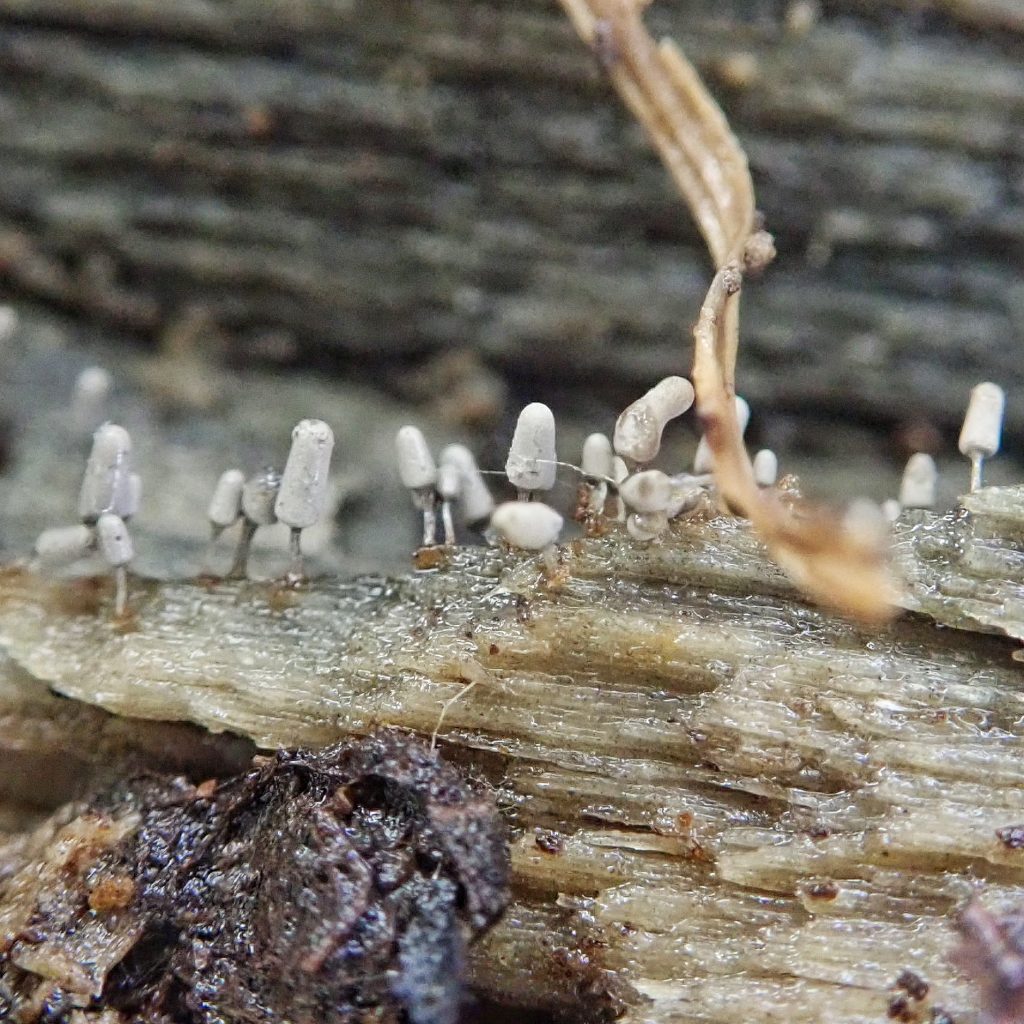
Before I get into talking about my latest myxo friend (myxo being short for the class Myxogastria, the acellular or plasmodial slime ‘molds’, which are not in fact molds or any other type of fungi; hence my preference for a colloquial name that doesn’t imply that they are), I’d like to clear up a possible misperception, and address an omission, from my previous post on the myxo Trichia varia. First off, when I said ‘At present they are placed in the phylum Amoebozoa’ I merely meant that they had finally been moved completely out of any grouping that implied that they were fungi, not that scientists might, willy nilly, throw them into some other group. Myxos are amoeba, and the clade Amoebozoa (the International Society of Protistologists classify it as a ‘supergroup’ rather than as a phylum) is monophyletic (organisms descended from a common ancestor not shared with any other group) so that will not change. My omission was that I implied that Myxogastria contains all of the organisms that have been called ‘slime molds’, but this is not true. There are cellular slimes called Dictyostelia and Protostelia that live most of their life as single celled amoeba (and are also classified in the supergroup Amoebozoa), but cluster into a multicellular unit during food shortages and for reproduction. They are microscopic and it is unlikely that I will ever profile them, or that any of you readers will see one with your naked eyes.
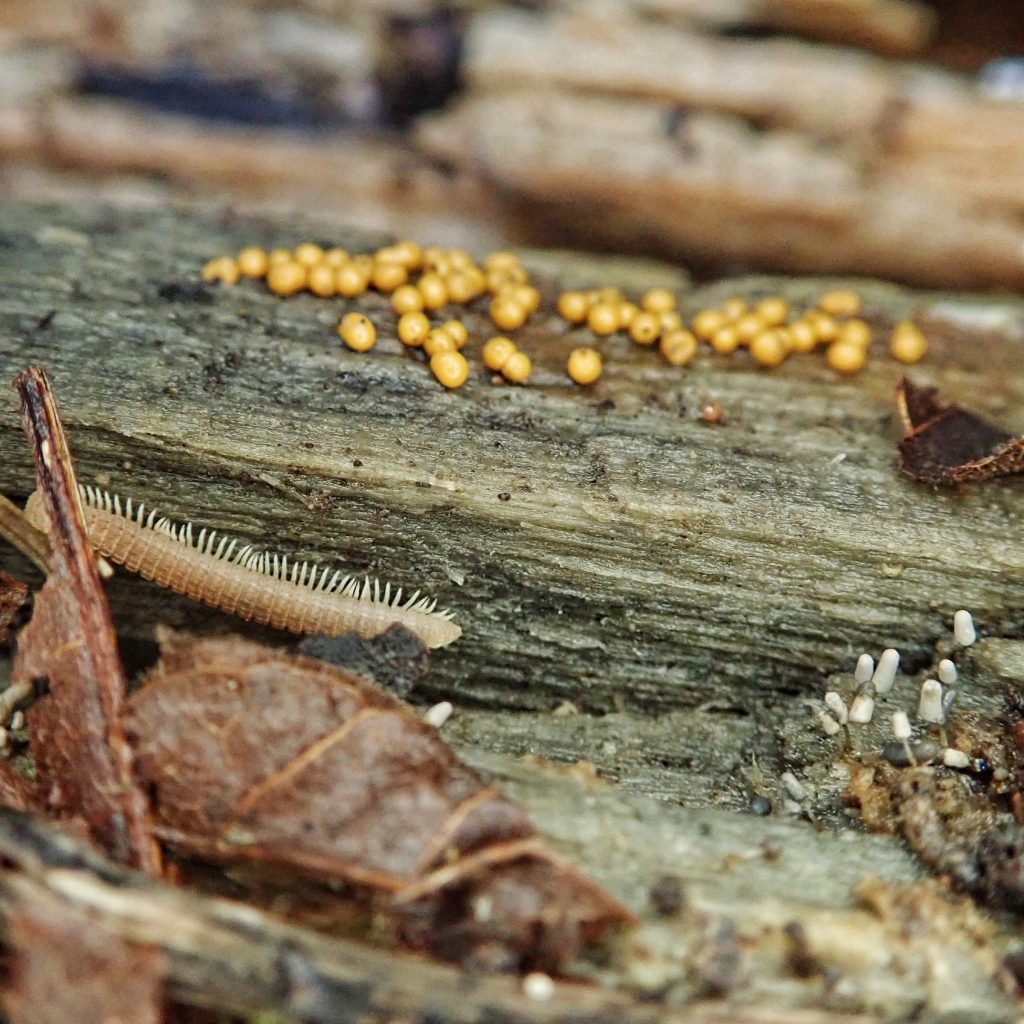
So, when I first found these little Arcyria cinerea I thought, in my ignorance, that they were just another phase in the lifecycle of what turned out to be Trichia varia. But by the time I had identified those myxos I knew better and returned to the rotting log (actually more of a thick branch) where I’d found them to gather some sporangia to go with my photos. This member of the family Trichiaceae is apparently also very common within leaf litter, and shows up regularly when litter samples are cultured in a moist chamber. I’ll definitely be looking for it as I comb through forest duff in search of soil invertebrates!
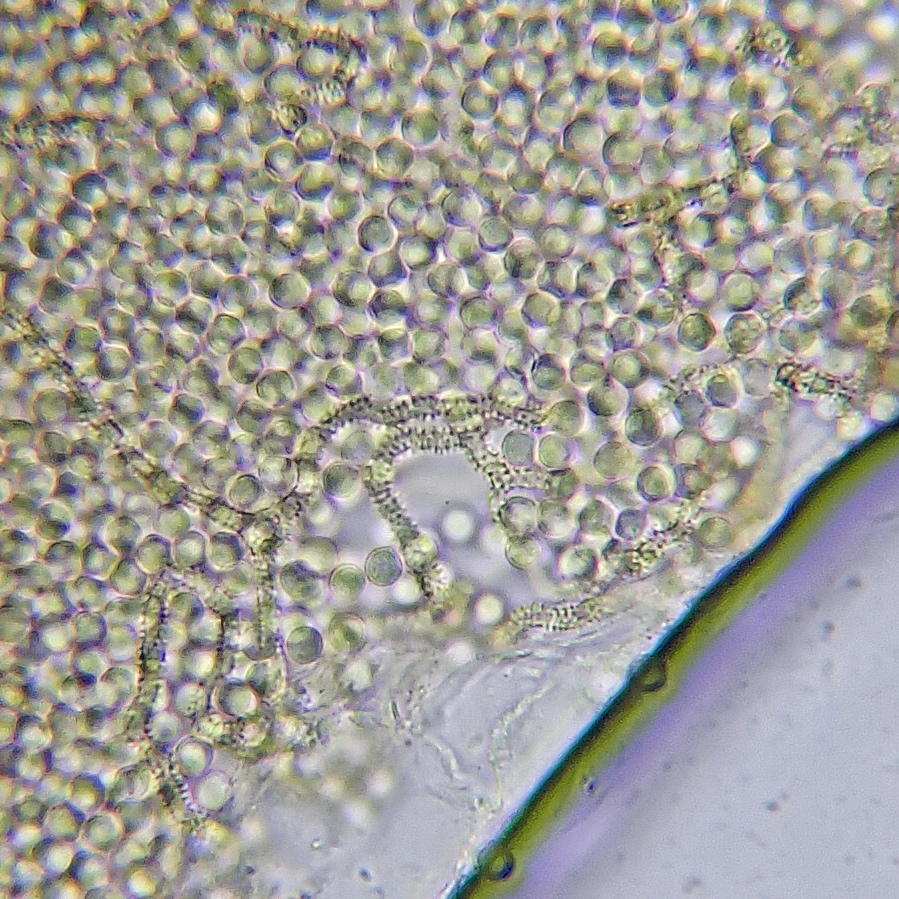
Description-Sporangia are a light, ashy grey to light, yellowish brown, cylindrical to ovate, .1-.8mm wide by .3-4mm, on light grey to black stalks up to 2mm tall; scattered and in groups, frequently with fused stalks and multiple sporangia; at maturity the peridium (spore covering) disintegrates except for a cup shaped basal portion (calyculus); capillitium netlike, with many small, blunt tubercles; spores colorless under a microscope, spherical, with warty margins; plasmodium white to light grey.
Similar species–Arcyria pomiformis is smaller, with ovate sporangia, and yellow spores; A. globosa has globose sporangia and is found almost exclusively on chestnut burs.
Habitat-Decaying wood, bark, leaf litter and dung.
Range-Cosmopolitan; probably found region wide in moist to mesic forests and woodlands.
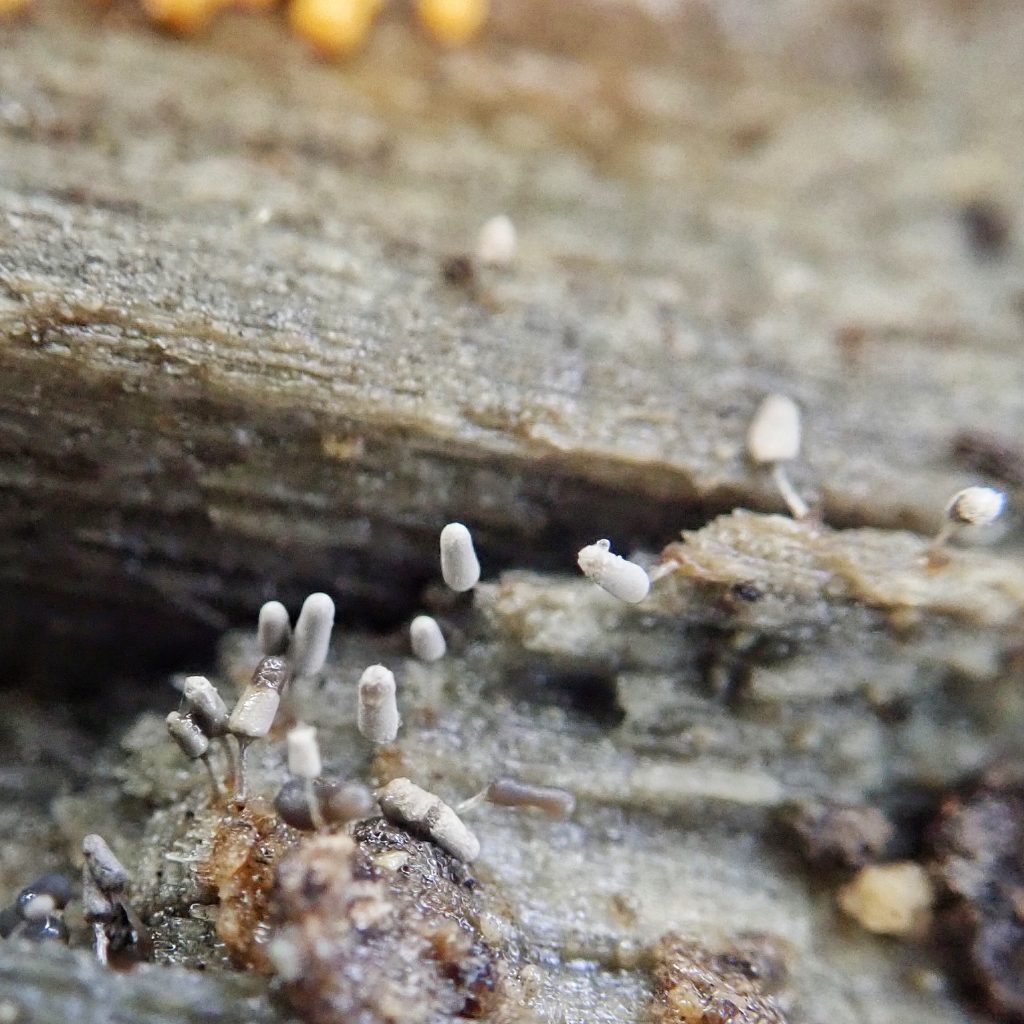
Eaten by-Parasitized by fungi in the genus Nectriopsis; Agathidium spp.,and Baeocera spp. beetles are known to feed on this species, and it is likely that many more myxo specialists in the beetle families Lathridiidae, Sphindidae, Scaphidiidae, and Leiodidae do so also; woodlice (including Oniscus asellus), some millipedes, a wide range of flies, various mites, nematode worms, and slugs and snails; sometimes grazed by mice.
Eats– Bacteria
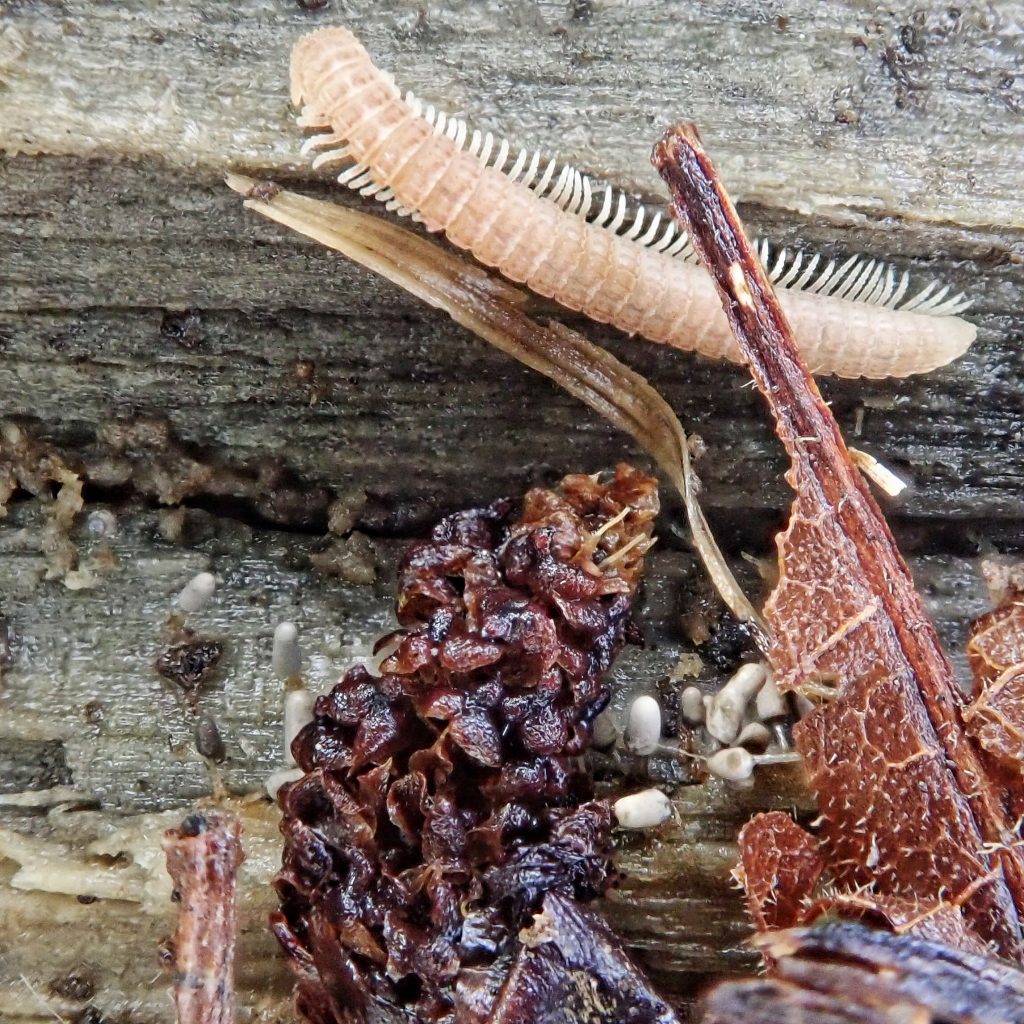
Life cycle– Many species in the family Trichiaceae engage in fall sporulation, and these sporangia were found in late October. For more general information on the life cycle of myxos, see my post on Trichia varia.
Etymology of names–Arcyria is from the Greek word for ‘net’, and probably references the network of threads comprising the capillitium, a characteristic of this genus. The specific epithet cinerea is from the Latin word for ‘ashes’, and probably refers to the color of the sporangia.
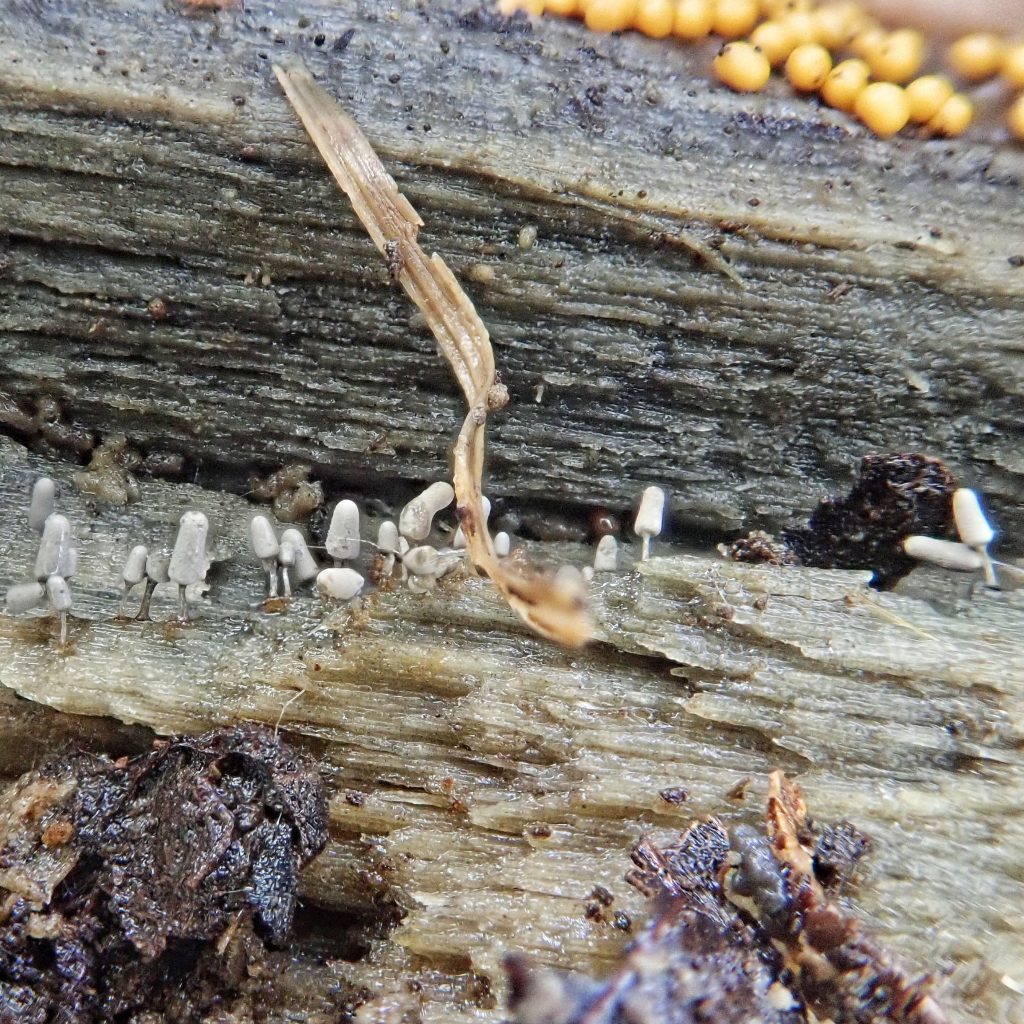
https://www.hiddenforest.co.nz/slime/family/arcyriaceae/arcyr02.htm
https://www.discoverlife.org/mp/20q?search=Arcyria+cinerea
https://www.disjunctnaturalists.com/myxo-species/arcyria-cinerea-0279.pdf
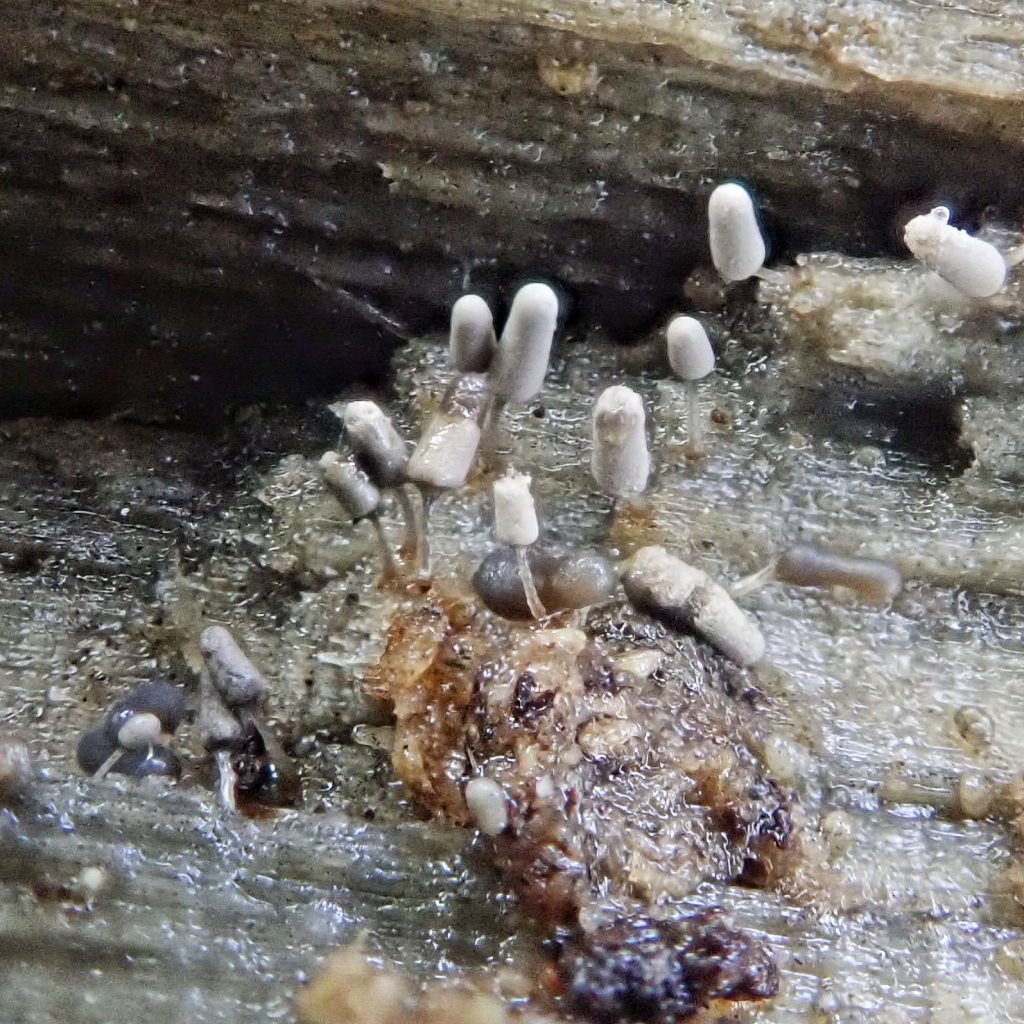
Thanks again my friend…all I can say is it brings me rare peace to read your descriptions of ‘thats the happenings’ am re interested in life at its most neutral and beneficial..certainly these life forms seem good in that sense of carrying no I’ll will to the mother..
Makes me happy to hear that, my friend! Thank you!